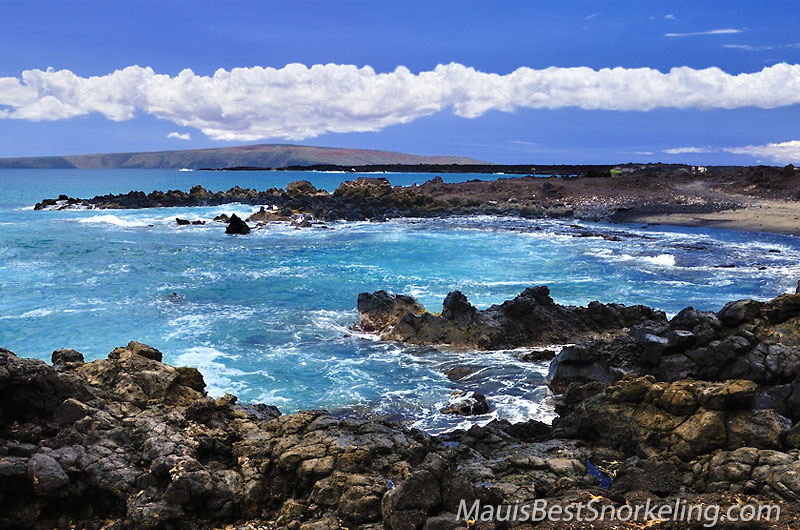When we’re not snorkeling we love to explore Maui. If you haven’t driven down Makena Road to La Pérouse Bay in South Maui it’s well worth your time.
Heading south from Kihei and past Wailea, you’ll reach the area known as Makena. Neither Wailea or Makena have their own zip codes, but they are by no means just an extension of Kihei. Each area has its own distinct feel. Driving along the tree lined, manicured resorts of Wailea there’s a definite sense of upscale luxury.
The further you go, Wailea-Alaluni Road melds into Makena-Alaluni and the vibe changes from “lively tourist zone” to “mellow residential” with a whole cast of beautiful beaches along the way…Po’lenalena, Makena Landing, Maluaka, Little Beach and Big Beach—all should be on your list for visiting while you’re in Maui. But if your goal is LaPérouse Bay keep on driving; past the big red hill (known as Pu’u Ola’i), past Secret Beach (a tiny, beautiful spot that nearly always has a wedding underway), and on down the road with its fantastic views of Molokini and shore side homes you’d love to call home.
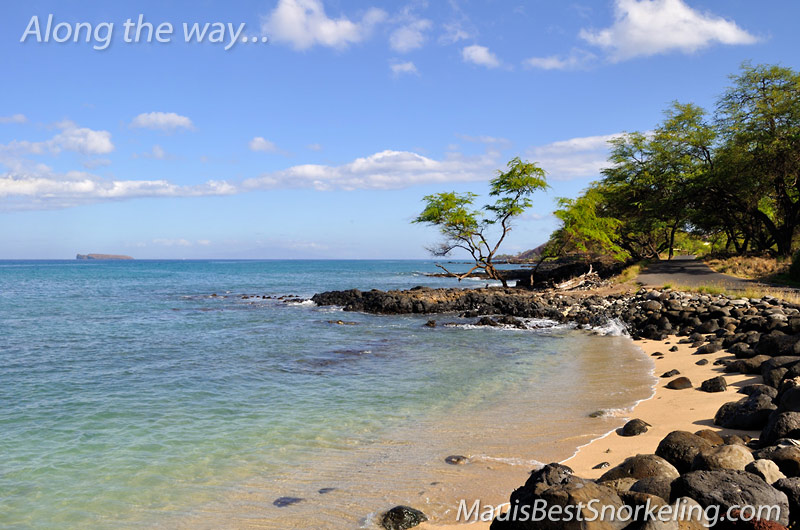
As you proceed, the road narrows and hugs the lava lined shores of the Pacific. Take it slow and you’re likely to see bright yellow tangs flitting about in the shallows. It’s a whole different feel from the hustle and bustle of Kihei or Wailea, no sprinklers keep the landscape green, it’s hot and dry with scant shade from the thorny Kiawe trees overhead.
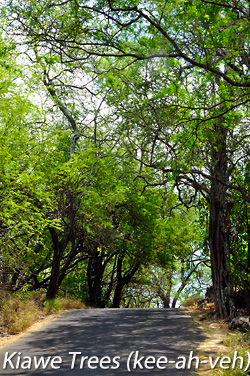
Soon you’ll soon reach Ahihi Cove, it’ll take all your willpower to resist the urge to pull over for a swim at this idyllic spot. Beyond the cove you’ll enter the lava fields on the southwest side of Haleakala.
The road becomes one lane from here on out as it gently ascends and descends through the stark lava landscape. You’ll want to keep your speed down to accommodate oncoming traffic and bikers, as well as wild goats that amble along the road. After passing the parking area for Ahihi Bay, your destination is just a mile and a half away. You’ll know you’ve arrived when the pavement ends at a gravel parking area beside the bay.
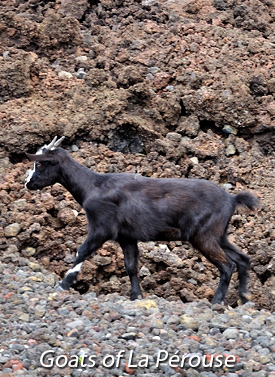
If you’ve never visited this part of the island, the trip alone is a “mini adventure.” But there’s plenty more to see depending on how much you want to explore. A private property sits just to the right of the parking area, please don’t trespass even if other visitors disregard the posted signs. When it comes to being visitors, we live by the golden rule and encourage you to do the same.
The trail starts to your left close to shore. You can follow it until you feel like turning around, though many don’t venture beyond the first half-mile or so. You’ll pass by early Hawaiian ruins, rugged shorelines, lava arches, and see the ocean erupt from a small blowhole as waves roll in. Rock cairns dot the trail, along with tide pools bordered by “salt and pepper rocks” (black lava and weathered white coral).
Further along you’ll find a memorial to surfers under shoreline trees. When the south swells are up, La Pérouse is a favorite surf spot and a few have lost their lives here. If you continue down the trail you’ll eventually reach a light marking Cape Hanamanioa (just under 1.5 miles from your start). Some call it a light house, but it’s really not much more than a light on a pole marking one of the southernmost points on Maui.
You can continue along this path or on the Hoapili Trail, a route once used by ancient Hawaiians and also known as the King’s Highway. If you’re the tenacious type and don’t mind hiking through lava in the heat, King’s Highway eventually leads to Keawanaku Beach and further yet, Kanaio Beach. It’s a memorable adventure hiking to these oasis-like spots, but neither beach is marked so it takes a bit of guesswork and plenty of patience while making your way through “alotta” lava! If you try snorkeling at Keawanaku, take care, we’ve encountered exceptionally strong currents here. Remember, you’re on-your-own at this very isolated spot.
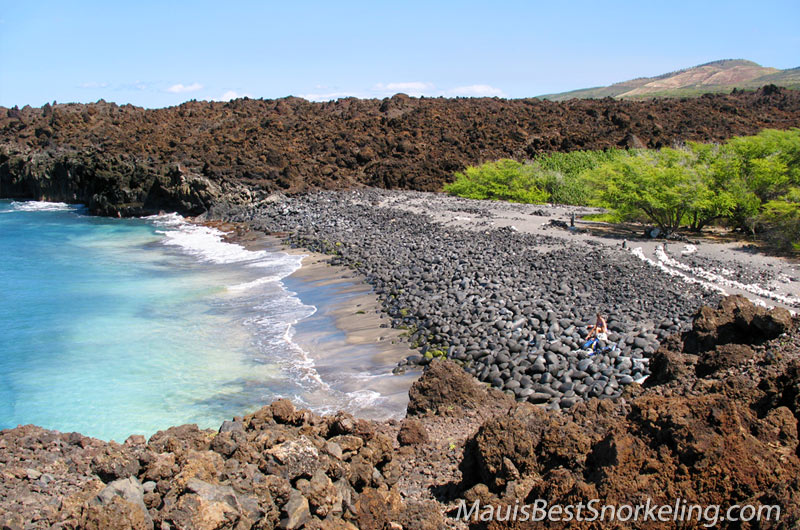
La Pérouse is a uniquely beautiful place offering adventure for just about everyone. We recommend timing your visit for early morning or late afternoon/early evening to avoid the windiest times of day (as the area is notorious for high winds). If you plan on hiking the trails, bring plenty of water and wear appropriate footwear—flip-flops won’t cut it. Twisting an ankle while navigating the rugged trails here is a real possibility, and likely NOT on your vacation bucket list!
For more information on snorkeling or exploring Maui, pick up a copy of Mask Fins & Snorkel: The Adventure Guide to Maui’s Best Snorkeling. You can also contact us here. We’d love to hear from you!

